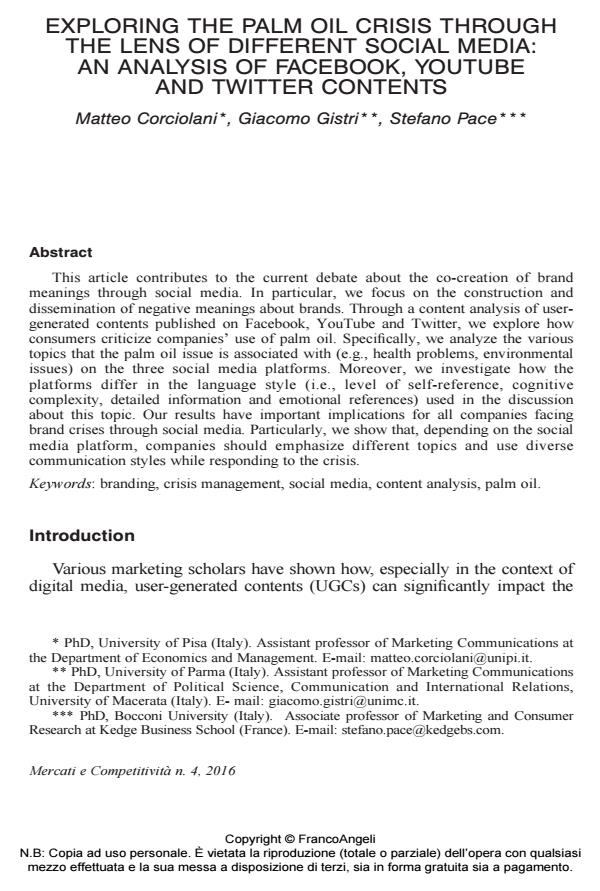Exploring the palm oil crisis through the lens of different social media: an analysis of facebook, youtube and twitter contents
Journal title MERCATI & COMPETITIVITÀ
Author/s Matteo Corciolani, Giacomo Gistri, Stefano Pace
Publishing Year 2016 Issue 2016/4
Language English Pages 22 P. 43-64 File size 97 KB
DOI 10.3280/MC2016-004004
DOI is like a bar code for intellectual property: to have more infomation
click here
Below, you can see the article first page
If you want to buy this article in PDF format, you can do it, following the instructions to buy download credits

FrancoAngeli is member of Publishers International Linking Association, Inc (PILA), a not-for-profit association which run the CrossRef service enabling links to and from online scholarly content.
Keywords: Branding, crisis management, social media, content analysis, palm oil.
- Sosyal Medya Kaynaklı Krizlerin 'İmaj Restorasyon Teorisi' Açısından Örnek Olaylar Üzerinden İncelenmesi Özlem Duğan, in Akdeniz Üniversitesi İletişim Fakültesi Dergisi /2018 pp.293
DOI: 10.31123/akil.396418 - The interaction effect between brand identification and personal crisis relevance on consumers’ emotional reactions to a fashion brand crisis Giacomo Gistri, Matteo Corciolani, Stefano Pace, in Journal of Global Fashion Marketing /2018 pp.252
DOI: 10.1080/20932685.2018.1461021
Matteo Corciolani, Giacomo Gistri, Stefano Pace, Exploring the palm oil crisis through the lens of different social media: an analysis of facebook, youtube and twitter contents in "MERCATI & COMPETITIVITÀ" 4/2016, pp 43-64, DOI: 10.3280/MC2016-004004